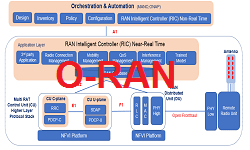What is 5G New Radio Unlicensed – NR-U?
5G NR Unlicensed – NR-U
3GPP release 16 specifications is developing a brand novel radio access technique known as 5G NR Unlicensed (5G NR-U) which is aimed at expanding 5G NR’s capabilities to bands that are not licensed. 5G NR-U is an evolution of the 4G LTE License Assisted Access –LAA standards, introduced as part of 3GPP release 13.
In this blog, we will present an introduction to 5G NR-U design features.
5G NR-U Frequency Bands
Two frequency bands are intended for operation of NR-U:
- Low Frequency Bands below 7 GHz
- High Frequency Band close to 60 GHz
Particularly, approximately 2GHz of unlicensed/shared spectrum are available for omnidirectional communications less than 7 GHz on the Industrial Scientific Medical (ISM) band at 2.4 GHz as well as in the CBRS band which is 3.5 GHz and the UNII bands with 5GHz and 6GHz.
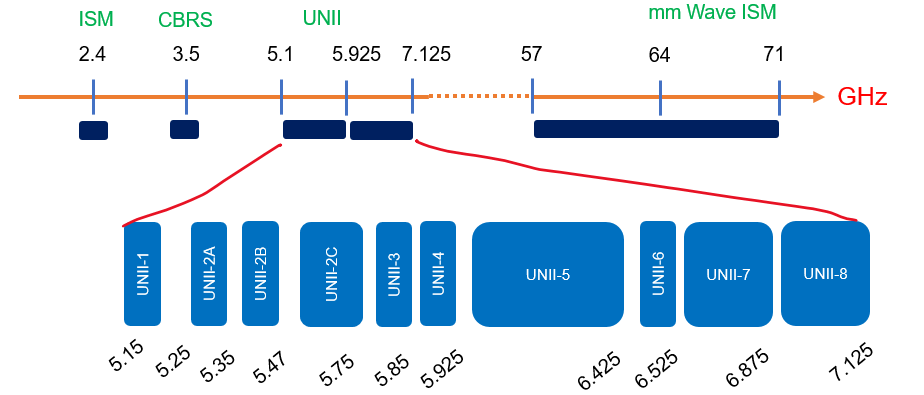
There are also 14GHz unlicensed band in the 60GHz frequency range, which can be used to provide direction-specific communications.
FCC recently released its proposed rulemaking the bands available between 5.925 5 GHz through 7.125 GHz to unlicensed access under the part 15 rules. Different UNII bands are subject to different limitations on transmit power maximum as well as the effective isotropic radiation power (EIRP) as well as their suitability for outdoor and indoor use, as well as need for dynamic frequency choice (DFS).
Users who are not licensed must execute DFS to prevent interference with radars or the other services licensed to operate within UNII bands. Under DFS, a device that is not licensed is required to stop its transmission and conduct periodic monitoring for radar signal. If a radar signal is detected, transmission must be immediately stopped and the channels should be shut down after 30 mins. The methods for detecting radar signals aren’t defined and are left to the discretion of the user.
5GHz can be divided into channels that are non-overlapping and have a the 20-MHz band. More channels (e.g. 40 or 80 MHz) are possible to create via channel bonding. Systems that use NR-U are able to be used in conjunction with IEEE 802.11n/ac/ax-based and LTE-LAA systems over these channels.
For the band with 6 GHz the majority of it is currently used by licensed services, such as point-to-point microwave links stationary satellite networks, as well as mobile services such as the broadcast auxiliary services and the service for cable television relay. To ensure the safety of the licensed services, non-licensed customers are required to use automated frequency coordination (AFC) in which protection zones are created around incumbent services. those who aren’t licensed aren’t allowed to use bands within these zones of protection.
Transmit Power Regulations for NR-U
FCC regulates the Max Transmit power for UE and gNB to protect incumbent services. The Max Tx power limits are defined based on the outdoor and indoor deployment.
FCC regulates the Tx power of gNB operating outdoors to 23 dBm/MHz, in the same way that they continue to perform AFC. The EIRP over the 320 MHz bandwidth of the channel (the maximum bandwidth of the channel) must not over 36 dBm. Outdoor UEs are able to send up to 17dBm/MHz however they are is subject to a 30 dBm EIRP limitation on channel bandwidth of 320 MHz.
Outdoor operation is restricted to the UNII-5 (5.925-6.425 GHz) and UNII-7 (6.525-6.875 GHz) bands. Indoor operations can be conducted in every UNII bands. i.e. the UNII-5/-6/-7/-8 and AFC is not required.
gNB for indoor operation are allowed to transmit 5 dBm/MHz. They are subject to a maximum 30 dBm EIRP limits for channel bandwidths of 320 MHz. Indoor UEs are able to transmit at -1 dBm/MHz, without exceeding the EIRP limit of 24 dBm for channel bandwidths of 320 MHz.
NR-U Deployment Option
Dual connectivity (DC) and Carrier Aggregation (CA) are two types of connectivity that are available to enable UE operation on unlicensed spectrum.
- Dual connectivity (DC): When using the DC mode it is possible for a UE can share data with multiple gNBs/eNBs at once with one gNB/eNB being considered to be the primary one and the rest are considered secondary ones. Primary and secondary gNBs/eNBs are connected directly to the network core. 3GPP specifies bands within which multiple carriers are able to be launched.
- Carrier Aggregation (CA): In the CA mode, an UE exchanges data via the same gNB/eNB using two or more non-contiguous component carriers , which could be inter-band or intra-band. In the intra-band CA principal and second carriers can be on the same band however, in inter-band CA the carriers may be located on different bands.
The CA mode increases the speed of transmission and the DC mode improves throughput and reliability, however it has the difficulty of connecting UEs to multiple cells. If you are using DC mode failing the master link doesn’t cause any harm to secondary links. Based on the type of link, DC or CA is employed to connect to UEs that are not licensed carriers, 3GPP provides following options for NR-U deployment explained below.
- Scenario#1: (NR/NR-U LAA) CA mode that consists of a licensed carrier that is served by a 5G-NR cell as well as an unlicensed service provided by a 5G NR -U cell.
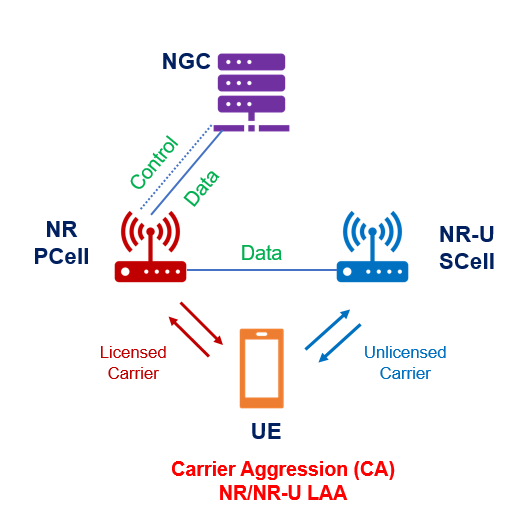
- Scenario#2: (LTE/NR-U DC) DC mode that consists of a licensed carrier that is served through an LTE cell, and an unlicensed carrier that is served by a 5G NR-U phone.
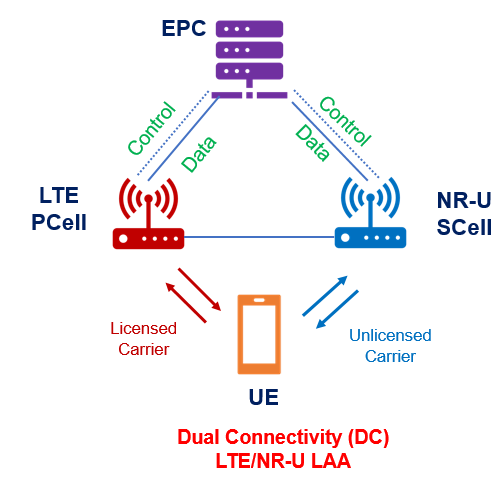
- Scenario#3: (NR-U Standalone) is a stand-alone mode comprised of an unlicensed carrier(s) provided by a 5G NR-U cellular. This scenario is beneficial in operating private networks.
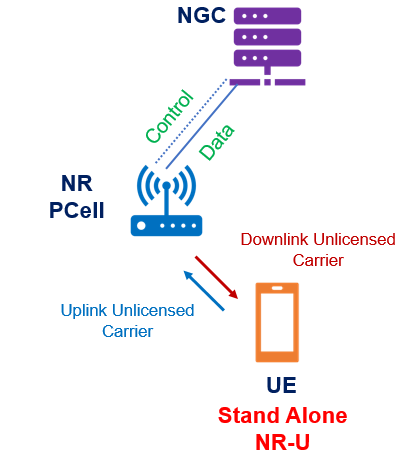
- Scenario#4: (NR/NR-U UL/DL) A combination of a licensed service provided by a 5G-NR cell to allow UL communications with an unlicensed service provided by a 5G NR-U mobile to enable DL communication.
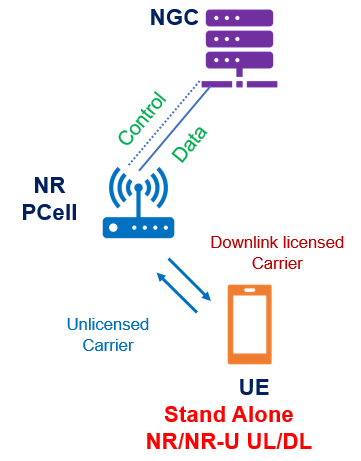
- Scenario#5: (NR/NR-U DC) DC mode consists of a licensed service provided by a 5G NR phone as well as an unlicensed service provided by a 5G NR-U phone.
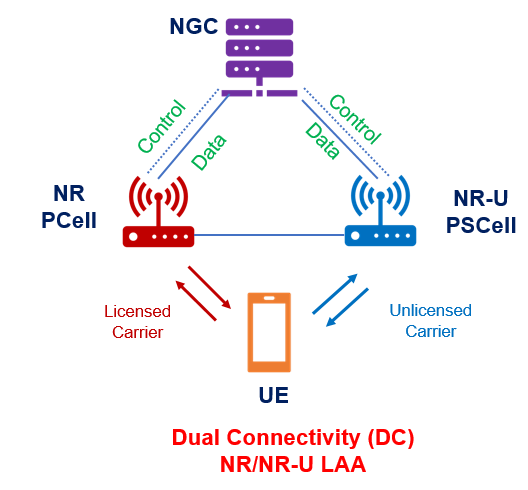
References
Related Post
- 5G Reference Network Architecture
- 5G Network Sharing: Concept, Benefits and Architectures
- Hybrid Core Network – 4G Core to 5 G Core Interconnection
- Deployments Scenarios for 5G-NR

